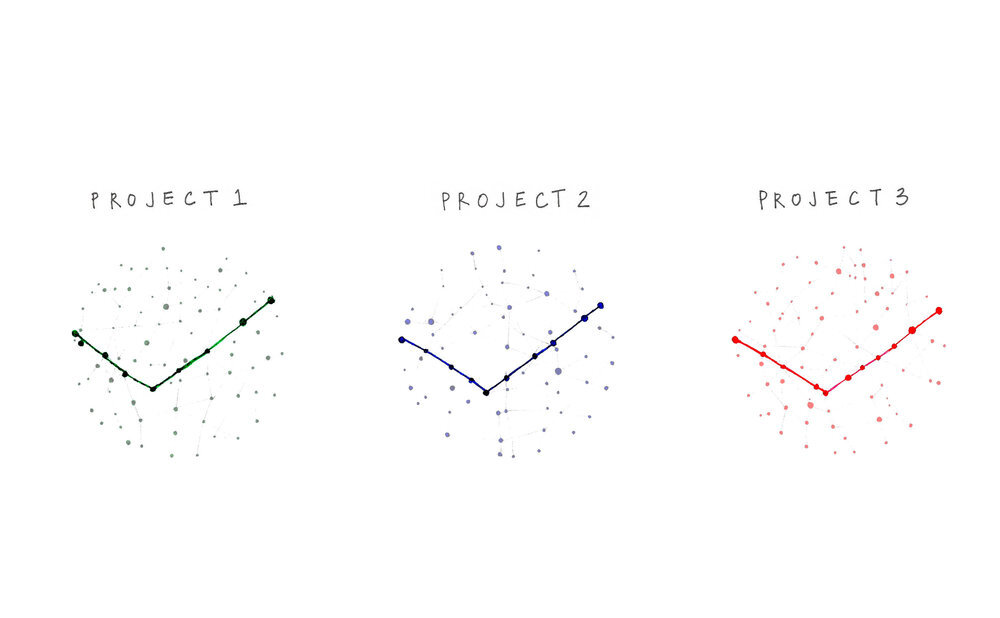The Portfolio Process: Connecting the Dots
Clients often ask about our portfolio process. While each client has unique goals and visual language, we follow a general framework. Start with a self-assessment to understand your strengths and objectives. Gather inspiration by researching industry trends and successful portfolios. Conceptualize and design with a focus on structure, content organization, and visual consistency. Refine your work, ensuring high-quality visuals and clarity. Seek feedback and make adjustments. Regularly update your portfolio to reflect your growth. By following this flexible approach, you can create a portfolio that effectively showcases your work and supports your professional goals.
1. COLLECTING ALL THE DOTS
First, gather everything you have created from your art and design studios—not only the presentable images you have already polished but also sketches and photographs of study models you have produced for studios and initial discussions. The more dots (images) you collect the better.
2. CONNECTING DOTS
Print everything out and pin it up on the wall. Once you see everything at once, you will start to notice relationships between images in a project and relationships between the projects. That’s how you start to draw lines from one dot to another. At this phase you don’t have to think about any specific relationship. You just try to understand what you have done and explore the potential lines. We help you make these connections.
。
3. FINDING A CONSISTENT PATTERN
Once you finish drawing lines between dots, you will see a pattern running through your projects. The contents of each project are different, but you will notice a consistency at the level of design approach and process. Pay attention to the consistencies, which will help you to identify your language. This is usually easier for us to see than for clients themselves; we provide our seasoned perspective to help clients better recognize their own unique design voice.
4. IDENTIFY MISSING DOTS
Reorganize each of your projects according to the pattern you have identified. You will notice that there are some missing dots in the work process. We help you identify works and other elements that are missing so you can create a complete design process.
5. COMPLETING THE PATTERN WITH MISSING DOTS
After identifying the missing pieces, solidify your project by re-working preexisting pieces or filling in new works that complete the overarching pattern of your project. Again, each project is unique in its own right; however, in the work pattern you have re-organized, viewers will see completeness and consistency throughout your whole portfolio.
6. RECONNECTING THE DOTS AND SOLIDIFYING THE PATTERN
The final step is to solidify the structure of each project. Identify the elements in the portfolio that are still vague or weak. Then, make the necessary changes to solidify each element and, in turn, the structure of the overall pattern. Reconnect the dots to complete the patterns for each project.
7. FINALIZING THE PORTFOLIO
With your dots and lines cleanly connected with consistency and coherence, your design language and potential will shine out unmistakably.








